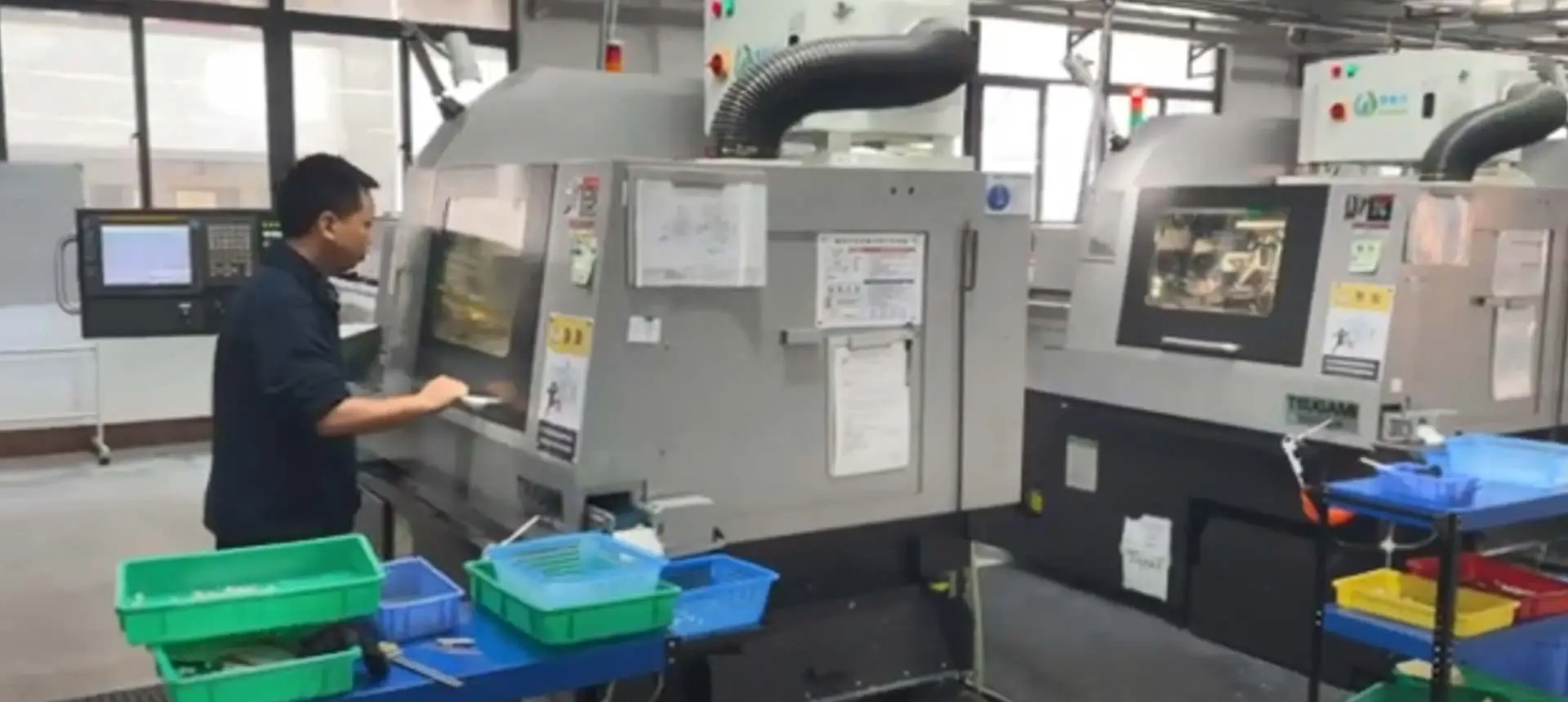
فحص المواد: تبدأ عملية مراقبة الجودة بفحص المواد الخام الواردة. يجب أن تفي المواد المستخدمة للبطانات/الأكمام بالمعايير والمتطلبات المحددة. قد تتضمن طرق اختبار المواد تحليل التركيب الكيميائي واختبار الصلابة والتحقق من الأبعاد.
دقة الأبعاد: البطانات/الأكمام يجب أن يكون لها أبعاد دقيقة لضمان الملاءمة والأداء الوظيفي المناسبين. تتضمن تدابير مراقبة الجودة عمليات تفتيش الأبعاد باستخدام أدوات ومعدات معايرة ، مثل الفرجار والميكرومتر والمقاييس ، للتحقق من الأقطار الداخلية والخارجية والطول وسمك الجدار.
جودة السطح: الانتهاء من سطح البطانات/الأكمام أمر بالغ الأهمية للتشغيل السلس وتقليل الاحتكاك. تتضمن فحوصات مراقبة الجودة فحص الأسطح بصريًا للكشف عن العيوب مثل النتوءات أو الخدوش أو المخالفات. يمكن أيضًا إجراء قياسات خشونة السطح باستخدام أدوات مثل مقاييس الحواف.
التحقق من التسامح: البطانات/الأكمام لها تفاوتات محددة تحدد الاختلافات المقبولة في الأبعاد. تتضمن إجراءات مراقبة الجودة فحص المكونات المصنعة مقابل هذه التفاوتات للتأكد من أنها تقع ضمن الحدود المحددة.
الخواص الميكانيكية: وفقًا لمتطلبات التطبيق ، يجب تقييم بعض الخواص الميكانيكية للبطانات/الأكمام ، مثل الصلابة وقوة الشد والاستطالة. يمكن تقييم هذه الخصائص من خلال طرق اختبار موحدة ، بما في ذلك اختبار الصلابة (على سبيل المثال ، روكويل أو برينل) واختبار الشد.
مواد | الحديد ، الفولاذ المقاوم للصدأ ، النحاس ، النحاس ، الفولاذ المجلفن ، التيتانيوم ، الألومنيوم ، إلخ. |
معالجة السطح | الزنك/النيكل/القصدير/Ag مطلي/Au مطلي ، الخ. |
النوع | أجزاء غير قياسية عالية الدقة (خدمة OEM) |
عملية | ختم/اللكم/الضغط ، التصنيع باستخدام الحاسب الآلي/تحول/الطحن ، الرسم العميق وعملية أخرى. |
شهادة | IATF16949; I SO9001; ISO14001: ، RoHS & rach ، إلخ. |
الاستخدام | ترموستات للسيارات/السيارات ، التبديل ، التدفئة الكهربائية ، الفضاء ، الطاقة الجديدة ، إلخ. |
البطانات ، المعروفة أيضًا باسم الأكمام ، هي مكونات أسطوانية تستخدم في تطبيقات مختلفة لتوفير الدعم وتقليل الاحتكاك وامتصاص الصدمات أو الاهتزازات. يمكن أن تختلف ميزات المنتج المحددة للبطانات/الأكمام حسب الاستخدام المقصود والمواد التي صنعت منها.
ارتداء المقاومة:البطانات/الأكمام قد يكون لها ميزات محددة لتعزيز مقاومة التآكل ، وخاصة في التطبيقات عالية الحمل أو عالية السرعة. يمكن أن تشمل هذه الميزات طلاء سطح خاص ، أو معالجة حرارية ، أو استخدام مواد ذات خصائص مقاومة للاهتراء.
الملطف وامتصاص الصدمات:تم تصميم بعض البطانات/الأكمام لامتصاص الصدمات أو الاهتزازات ، مما يقلل من انتقال قوى التأثير. قد يكون لديهم خصائص مثل مرونة عالية ، أو المرونة ، أو القدرة على تشوه تحت الحمل ، وتوفير خصائص التثبيط.
مقاومة التآكل:اعتمادًا على التطبيق وبيئة التشغيل ، قد تتطلب البطانات/الأكمام خصائص مقاومة للتآكل. هذا مهم بشكل خاص عند التعرض للرطوبة أو المواد الكيميائية أو درجات الحرارة القصوى. اختيار المواد المناسبة أو تطبيق الطلاء الواقي يمكن أن يعزز مقاومة التآكل للبطانات.
الميزات الخاصة بالتطبيق:قد تحتوي بعض البطانات/الأكمام على ميزات إضافية خاصة ببعض التطبيقات. على سبيل المثال ، تحتوي البطانات ذات الحافة على شفة مدمجة توفر ثباتًا إضافيًا أو نقاط تثبيت.
عند اختيار البطانات/الأكمام ، فكر في المتطلبات المحددة للتطبيق الخاص بك ، مثل سعة التحميل والسرعة وظروف التشغيل والعوامل البيئية. سيساعد فهم ميزات المنتج ومدى ملاءمته للاستخدام المقصود على ضمان الأداء الأمثل وطول العمر.
البطانات عبارة عن مكونات أسطوانية بسيطة مصممة لتقليل الاحتكاك بين العمود والهياكل الخارجية ، وتوفر الدعم والتوجيه. توجد عادة في الأثاث ، وأنظمة تعليق السيارات ، وما إلى ذلك ، وهي مصممة للبساطة ويمكن أن تكون صلبة أو تتميز بأخاديد تزييت مدمجة لتقليل الاحتكاك وتعزيز المتانة.

المحامل ، من ناحية أخرى ، هي مكونات ميكانيكية أكثر تعقيدًا مع عناصر دوارة مثل الكرات أو البكرات. إنها تقلل الاحتكاك ، وتوفر قدرة تحمل أكبر ، وتوفر دعمًا عالي الدقة. تستخدم على نطاق واسع في المحركات والمحركات والمحاور والعجلات ، وما إلى ذلك ، تأتي المحامل في تصميمات مختلفة لتلبية متطلبات التطبيقات عالية السرعة وعالية التحميل. كمورد لتصنيع الأجهزة ، فإن HHC مكرسة لتقديم البطانات والمحامل عالية الجودة لتلبية احتياجات التصميم والتطبيق المتنوعة في مختلف الصناعات ، مما يساهم في التطوير في مختلف المجالات.
تعد الجلبة مكونًا حاسمًا يقلل من الاحتكاك بين العمود والهياكل الخارجية ، ويتم تحديد أدائها بواسطة المواد المختارة. هنا هو دليل على أنواع مواد الجلبة وتقنيات المعالجة المناسبة لكل منها:

النحاس:
الخصائص: Exhالموصلية الحرارية الجيدة والمقاومة للتآكل.
تقنيات المعالجة: تتم معالجة النحاس الأصفر عادة باستخدام تقنيات ميكانيكية مثل الخراطة والطحن والحفر لتحقيق الأشكال والأبعاد المطلوبة.
برونز:
الخصائص: تمتلك صلابة أعلى ومقاومة التآكل.
تقنيات المعالجة: غالبًا ما تتم معالجة البرونز من خلال الصب الدقيق أو البثق البارد أو تقنيات أخرى لتصنيع البطانات المعقدة الشكل.
البوليمرات:
الخصائص: معروفة بالتزييت الذاتي ومقاومة التآكل.
تقنيات المعالجة: يتم تصنيع البطانات البوليمرية عادة باستخدام قولبة بالحقن ، حيث يتم حقن البوليمر المصهور في قوالب لتشكيل الأشكال المطلوبة.

الطلاء المعدني:
الخصائص: يوفر مقاومة التآكل وقوة متفوقة.
تقنيات المعالجة: غالبًا ما يتم طلاء البطانات الفولاذية باستخدام عمليات مثل الغلفنة بالغمس الساخن أو الطلاء الكهربائي لتحقيق طلاء معدني واقي على السطح.


